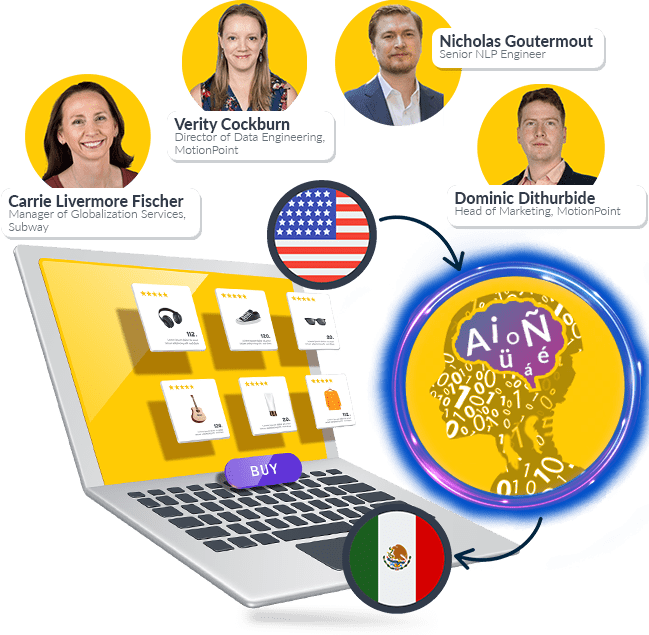As your company expands into new global markets, it's critical to present your website and digital assets in their locally preferred languages. This best practice builds market credibility, creates a positive online user experience, and communicates your value proposition effectively and accurately.
Using a proxy-based approach to website translation is a powerful way to attack this challenge at scale without having to invest significant resources—both human and capital—in order to build localized websites. Other approaches, including CMS connectors, might get the job done initially … but they can’t scale as your flagship sites grow and evolve.
Here’s what corporate IT and development leaders should look for in a modern proxy translation solution—one that combines the best of technology and human expertise to address the complexities of today’s website translation projects.
Discovering Translatable Content
If you've built a complex, dynamic website for your global business, understand that most translation approaches require you to constantly export, tag, translate, re-integrate and adjust content to suit individual localised instances of your website.
This workload is brutal, error-prone and expensive.
Look for proxy translation approaches that have mature content-parsing capabilities. The most advanced proxies can automatically analyse content from any server or service in the world-including on your site or loaded via third-party services-discover its translatable content, and immediately route it for translation.
Working with Dynamic Content
When it comes to localising dynamic content, most proxy approaches try to identify the appearance of new URLs-often generated based on user-specific information (like location, a login profile, or via cookies). This signals that there is new content being created that must be translated.
That's an old, inaccurate way to handle dynamic content. Truly modern proxies solve for this by configuring website crawlers to identify the actual calls to the server used by these applications, rather than relying on new URLs being created.
The crawler can then follow that call to the server, find the new content (even dynamically-generated content, like a customized set of product recommendations), and automatically route it through the proxy for translation—no matter how many times that content changes.
Content From Single-Page Applications
Single-page applications are a powerful component of many modern websites. They make it easy to integrate and display a highly-customised, interactive experience for users. They also create huge challenges for traditional, simplified website translation approaches.
The first step in translating content is identifying that content, and many technologies—such as CMS connectors—can’t even detect content from an application written in something like AngularJS or React.
It's practically impossible to have a human import and review all the code pushed from those applications for translatable content. It would require them to sort through the thousands of lines of code to find, tag and route the appropriate content through typical translation workflows.
However, today’s reimagined proxy translation technologies can do just that, and do it automatically, thanks to the ingenuity of human developers and the addition of intelligent programming. Most translation approaches just can’t get that done.
…And More
Today's website experiences leverage a great deal of integrated technology to maximise and optimise a user's time on-site.
For example, instead of static product libraries, many sites today leverage Product Information Management (PIM) technologies that manage massive volumes of product information, inventory data and specifications. Others use A/B testing platforms to optimise content, or integrated email solutions to communicate with users.
Advanced proxy solutions can provide APIs to receive content from these applications and plug seamlessly into the translation process. Using the API as a pathway, the proxy technology can:
- Identify the translatable content housed in the integrated software
- Translate the content, then store it in a special database called translation memory for future use
- Access the translation memory and serve the translated content automatically when that content is requested in the future
And because this translation memory functions independently of any other applications or your CMS, content you translate for any application can then be used in other areas of the site whenever it's needed-or in other applications like marketing automation platforms. This avoids the high costs associated with duplicate content translation.
Conclusion
You want to build the most personalised, resonant customer experience for your global users. Doing that often means leveraging complex website technologies and applications.
Look for a fully turn-key proxy translation provider that can leverage both human expertise and technology together to handle even the most complex, constantly-changing content.
This will make your website translation process simpler, faster and more cost-effective. And your translation capabilities will always be able to keep pace with the speed of your global business.
Last updated on July 26, 2018

